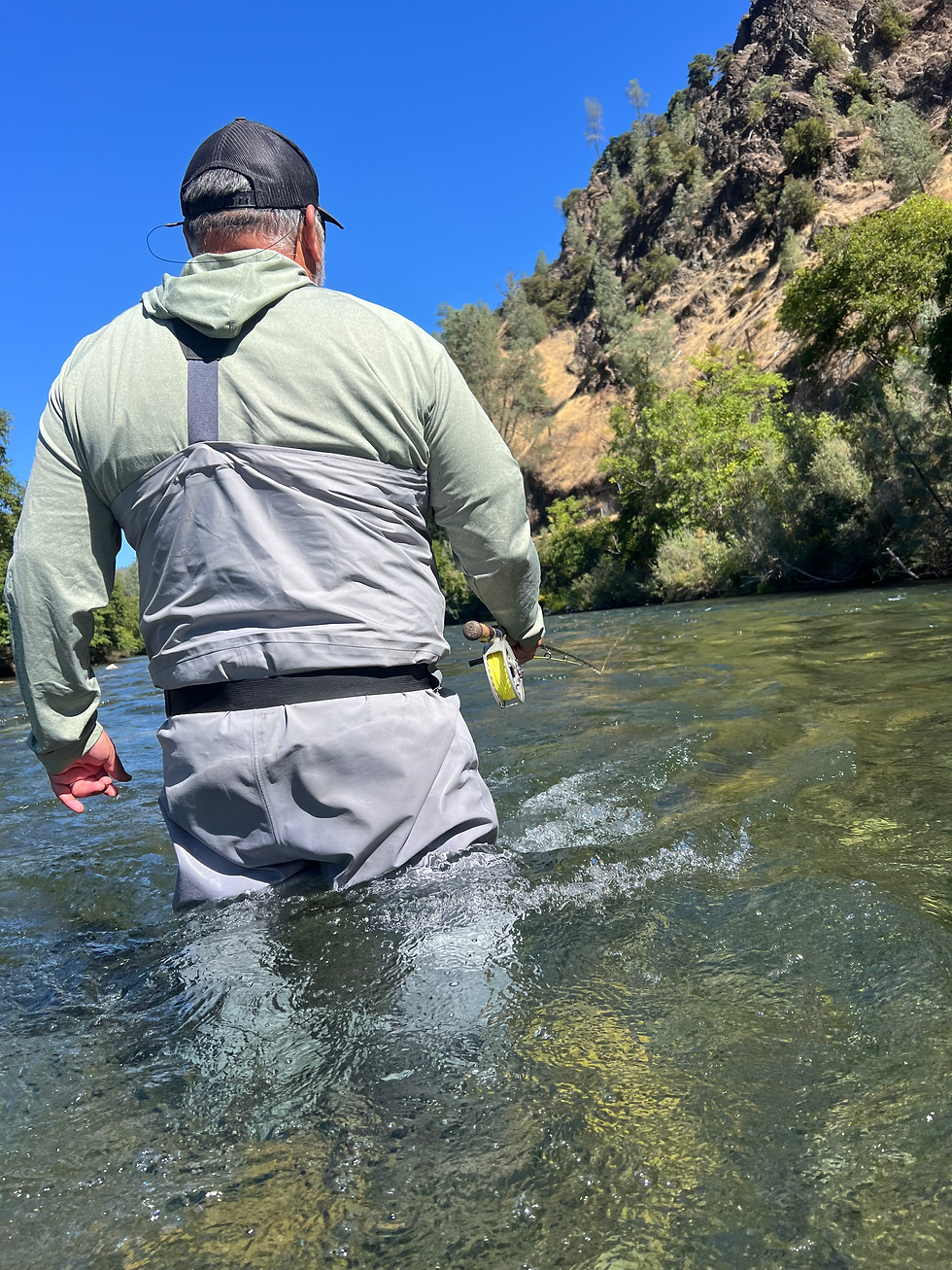Summer/Fall Steelhead
- Josh James
- Apr 19
- 3 min read
Updated: Jul 7
# Swing Season: The Magic of Summer and Fall Steelhead
There’s something almost sacred about chasing summer and fall steelhead on the swing. It’s not just the fish; it’s the essence of the season. Warm mornings turn crisp, with golden light filtering through the oaks and pines. The steady rhythm of a Spey cast slicing through the cool air is exhilarating. For many of us, this is the season we live for.
## Why Swinging?
You can catch a steelhead nymphing or even with a bead, sure. But swinging? That’s where the soul lives. It’s about feel. Connection. That slow, controlled swing across the current, rod high, eyes locked on the hang-down. Then—bam—a grab that feels like you just stuck your rod into a power outlet. That moment is pure electricity, and it never gets old.
## The Summer/Fall Steelhead Mindset
These fish are built differently. Summer and fall steelhead are often more active and aggressive, especially when water temperatures stay in the ideal 50–60 degree range. They’re more likely to chase, rise to a dry, or follow a fly halfway across the river before deciding to commit. This responsiveness makes swinging flies an effective and thrilling way to fish for them.
You’re not just dredging the bottom hoping for a reaction; you’re provoking a response. You’re enticing a fish to move. You’re hunting.
## Gear Considerations
Summer and fall steelhead don’t always demand heavy artillery. During this time of year, particularly on rivers like the Trinity, Klamath, Rogue, or Deschutes, you can leave the sink tips and Skagit heads at home (at least some of the time). A dry line or light Scandi setup is often the ticket, paired with a soft-hackled fly or traditional pattern. Smaller flies, lower flows, and warmer water temperatures mean you can fish lighter—and sometimes skate dries for the ultimate surface grab.
Essentials:
Rod: 11–13 ft switch or spey rod, 5–7 wt
Line: Scandi head with a floating running line, or a full floating long belly
Leaders: 8–12lb mono, 10-12ft long
Flies: Traditional hairwings, soft hackles, muddlers, skaters
## Reading Water: Summer/Fall Edition
Focus on the soft edges early in the season. Look for tailouts, ledges, and that perfect walking-speed water that steelhead love. As temperatures cool, fish might slide deeper, but they still hold in swing-friendly lies. Think “fishy” instead of “technical.” These fish want to move.
Low-light periods—early morning and evening—can be pure magic. On cloudy days, you might get steady action all day long. And don’t underestimate the “hopeless” mid-day hours. Steelhead don’t read the same books we do.
## The Grab
If you know, you know. If you don’t—get out there and find out. The grab might be subtle: just a pause or a tightening of the line. Or it might feel like a freight train. Either way, it’s the payoff for patience and persistence. Set with tension, not a trout hookset. Let the rod load. Trust the swing.
## The Beauty of Connection
One of the greatest joys of swinging for summer and fall steelhead is the connection to nature. You are immersed in a beautiful environment, surrounded by trees, water, and wildlife. The sights and sounds of the river foster a deep appreciation for the ecosystem.
Mixing fishing with these sensory experiences makes every trip valuable. Sometimes, it’s not just about the number of fish you catch but the memories you create along the way.
## The Importance of Environmental Awareness
When we fish, we become stewards of the rivers we love. It's our responsibility to practice sustainable fishing techniques. Make sure to follow local regulations, respect catch limits, and handle fish with care. The health of our rivers is paramount for future generations of anglers and the fish they pursue.
Swinging for steelhead can be a way to connect with these principles. Each time you cast, remember that you are not just fishing but also participating in a larger narrative about stewardship and conservation.
## Closing Thoughts
Swinging for summer/fall steelhead is about more than fish count. It’s about the process, the repetition, and the way a run lines up just right. It’s the sound of your line zipping through the guides and the fire-orange leaves drifting past your waders. Those moments when a wild fish answers the call are the icing on the cake.
Get out there this season. Take it slow, and swing wide. Stay present and enjoy every moment. The steelhead will come. Embrace the journey and make memories that will last a lifetime.
---
Don't forget the thrill and excitement that swing fishing brings. It's not just a task; it's an adventure. Enjoy every cast and make the most of your time on the water.
---
Get ready for a journey filled with connection, adventure, and countless casts.





Comments